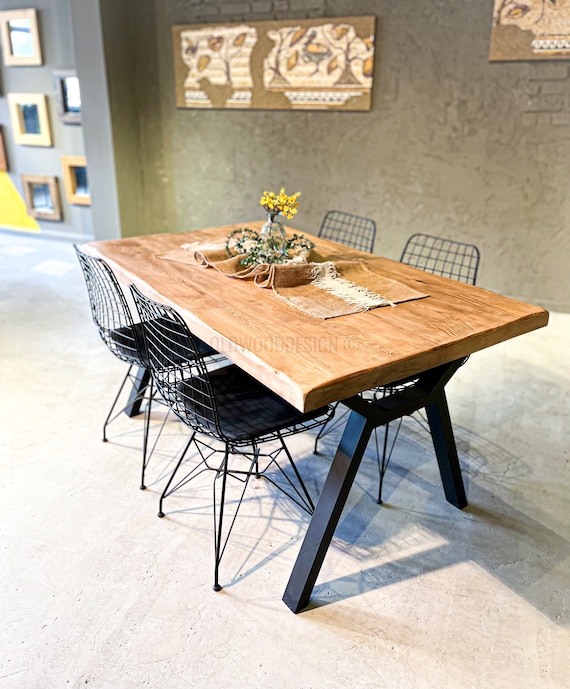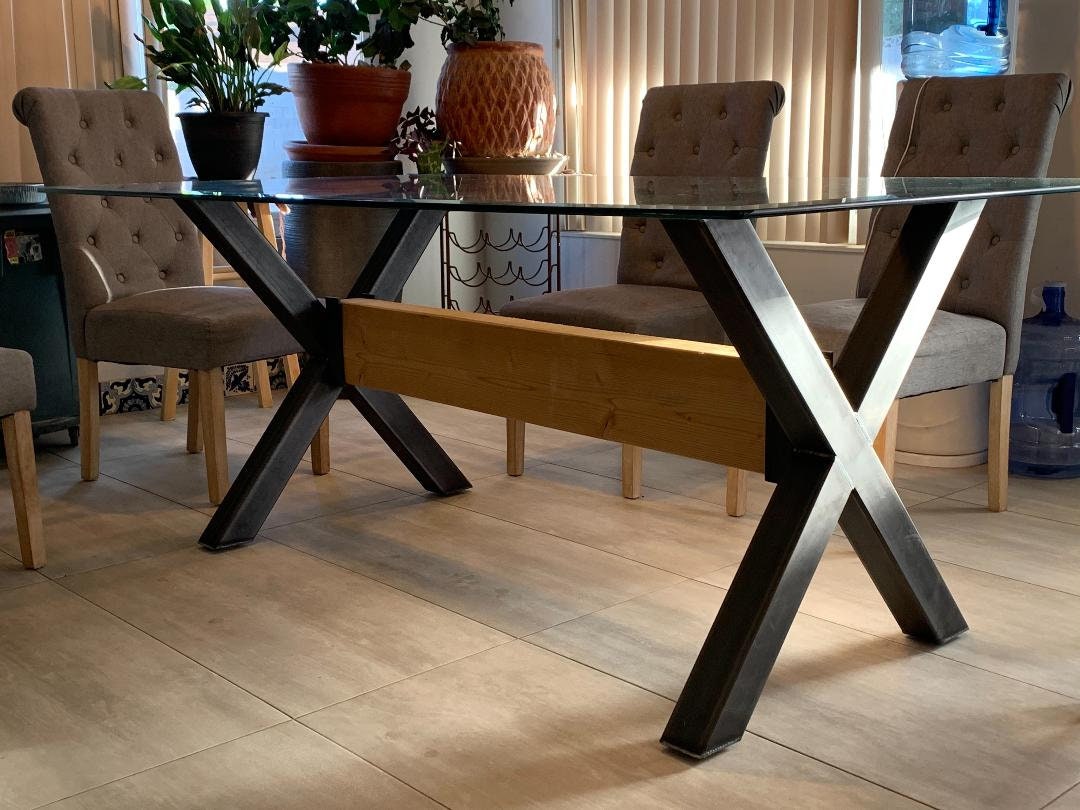Develop Magnificent Furnishings with Elegant Dining Table Legs Wood Choices
Develop Magnificent Furnishings with Elegant Dining Table Legs Wood Choices
Blog Article
What to Consider When Choosing Dining Table Legs Wood for Your Home.
When selecting timber for eating table legs, a number of crucial aspects warrant cautious factor to consider to ensure both performance and visual appeal. The sort of timber chosen can dramatically affect the table's sturdiness, security, and total style, while the maintenance demands might affect lasting use. Furthermore, the interplay of grain patterns and shade with existing home furnishings can create a cohesive layout. Understanding these components is necessary, yet several neglect the important aspect of budgetary restraints. As we discover these factors to consider even more, the implications of your selections may expose unexpected difficulties and possibilities.

Relevance of Wood Kind
When picking table legs, the option of timber type plays a crucial duty in determining both visual appeals and sturdiness. Different wood types supply varying degrees of strength, weight, and resistance to use, which can substantially affect the capability and long life of the table. Hardwoods such as oak, maple, and cherry are typically favored for their durable nature and capacity to withstand daily use. These timbers not just supply architectural integrity however additionally stand up to damages and scrapes better than softer alternatives.
On the other hand, softer timbers like want or poplar, while extra cost-efficient, might not supply the very same level of toughness and may call for even more regular upkeep or replacement. The wood type additionally affects the table's capacity to endure ecological factors such as moisture and temperature level variations. In addition, the selection of wood can affect the convenience of ending up and staining, which can be essential for accomplishing the preferred look.
Aesthetic Factors To Consider
The visual appeal of eating table legs significantly adds to the total visual of the eating space. Dining Table Legs Wood. When picking timber for dining table legs, the grain pattern, shade, and surface are critical elements that can take away or enhance from the room's design. Various wood types display differing shades and textures; as an example, oak provides a traditional look with prominent grain, while walnut supplies an abundant, dark elegance
Furthermore, the shape of the legs plays an essential role in defining the table's character. Sleek, minimalist legs can create a contemporary feel, while a lot more ornate, turned legs evoke traditional appeal. The design of the legs need to harmonize with existing furniture and the total style of the area, whether it be rustic, modern-day, or transitional.
It is additionally important to think about how the legs engage with various other furniture pieces, consisting of sideboards and chairs. A natural design not only raises the eating experience but also adds to the home's overall visual coherence. Inevitably, the choice of table legs need to be a thoughtful decision that reflects personal taste while making certain aesthetic consistency within the area.

Sturdiness and Security
Durability and security are crucial factors in the selection of eating table legs, as they directly affect the durability and safety and security of the furniture. When selecting wood for eating table legs, one must take into consideration the fundamental residential properties of different wood types. Hardwoods, such as cherry, oak, and maple, are commonly preferred for their strength and resistance to put on, making them appropriate for high-traffic dining locations.
Along with the type of timber, the construction method also plays a significant function in the total security of the table. Legs that are sturdily constructed, either with typical joinery strategies or modern-day design techniques, will give superior support and prevent wobbling. It is vital to evaluate the thickness and layout of the legs; thicker legs are generally much more secure and can endure greater weight.
Additionally, the environmental conditions in which the dining table will certainly be utilized can affect longevity. Timber that has actually been correctly dealt with for moisture resistance will do much better in damp atmospheres. Eventually, selecting the best combination of sturdy timber and secure building and construction will certainly make certain that your table continues to be a secure and practical focal point in your home for many years ahead.
Maintenance Needs
Choosing eating table legs made from long lasting wood is simply the start; comprehending maintenance needs is just as essential to preserve their look and capability. Different wood kinds require varying degrees of treatment, so it is important to Full Report understand what is needed for your particular option.
Routine cleansing is basic; make use of a soft, moist fabric to remove dirt and particles. Avoid harsh chemicals that can harm the surface. For timber surfaces like varnish or lacquer, regular polishing with furnishings wax can boost luster and Get More Information supply a safety layer versus scratches.
Preventative procedures are critical as well. Use rollercoasters and placemats to stay clear of direct contact with damp or warm things, which can warp or tarnish the timber. In addition, take into consideration positioning really felt pads under the legs to stop scratches on your floor covering and decrease wear on the wood
Humidity control is another considerable variable; keeping a steady setting assists to avoid warping and cracking. Consider utilizing a humidifier or dehumidifier as essential. if your dining area is vulnerable to variations in temperature and moisture.
Budget and Cost Aspects
When preparing to buy eating table legs, understanding budget and cost factors is necessary to make a notified decision. The kind of timber selected for the legs significantly affects the general price. Woods, such as oak or walnut, often tend to be extra pricey than softwoods like yearn, because of their toughness, visual allure, and deficiency. In addition, think about whether you are opting or acquiring pre-made legs for personalized designs, as modification commonly sustains greater prices.
Labor and craftsmanship also play a critical function in the overall expense. Handmade or artisan-crafted legs might carry a premium rate tag, reflecting the skill and time spent in their development. It's critical to evaluate the equilibrium between high quality and price; investing a lot more ahead of time can result in a longer-lasting item that calls for less maintenance with time.
Conclusion
In summary, picking the appropriate wood for dining table legs necessitates mindful consideration of different variables, consisting of wood kind, aesthetic allure, longevity, maintenance, and spending plan restrictions. The selection of woods such as oak and maple can boost both toughness and aesthetic appeal, while softer woods may be more economical but less enduring. Ultimately, a well-informed decision concerning material selection will contribute to the overall functionality and longevity of the dining table, ensuring a valuable financial investment for the home.
When picking timber for eating table legs, a number of important aspects call for cautious consideration to guarantee both performance and aesthetic allure.When picking eating table legs, the option of wood kind plays a critical duty in figuring out both appearances and longevity. When choosing wood for eating table legs, the grain shade, surface, and pattern are crucial components that can improve or take away from the area's style. When choosing timber for dining table legs, one must take into consideration the fundamental buildings of different timber types.In recap, choosing the appropriate timber for dining table legs demands cautious factor to consider of our website different variables, consisting of timber type, visual charm, budget, maintenance, and longevity restrictions.
Report this page